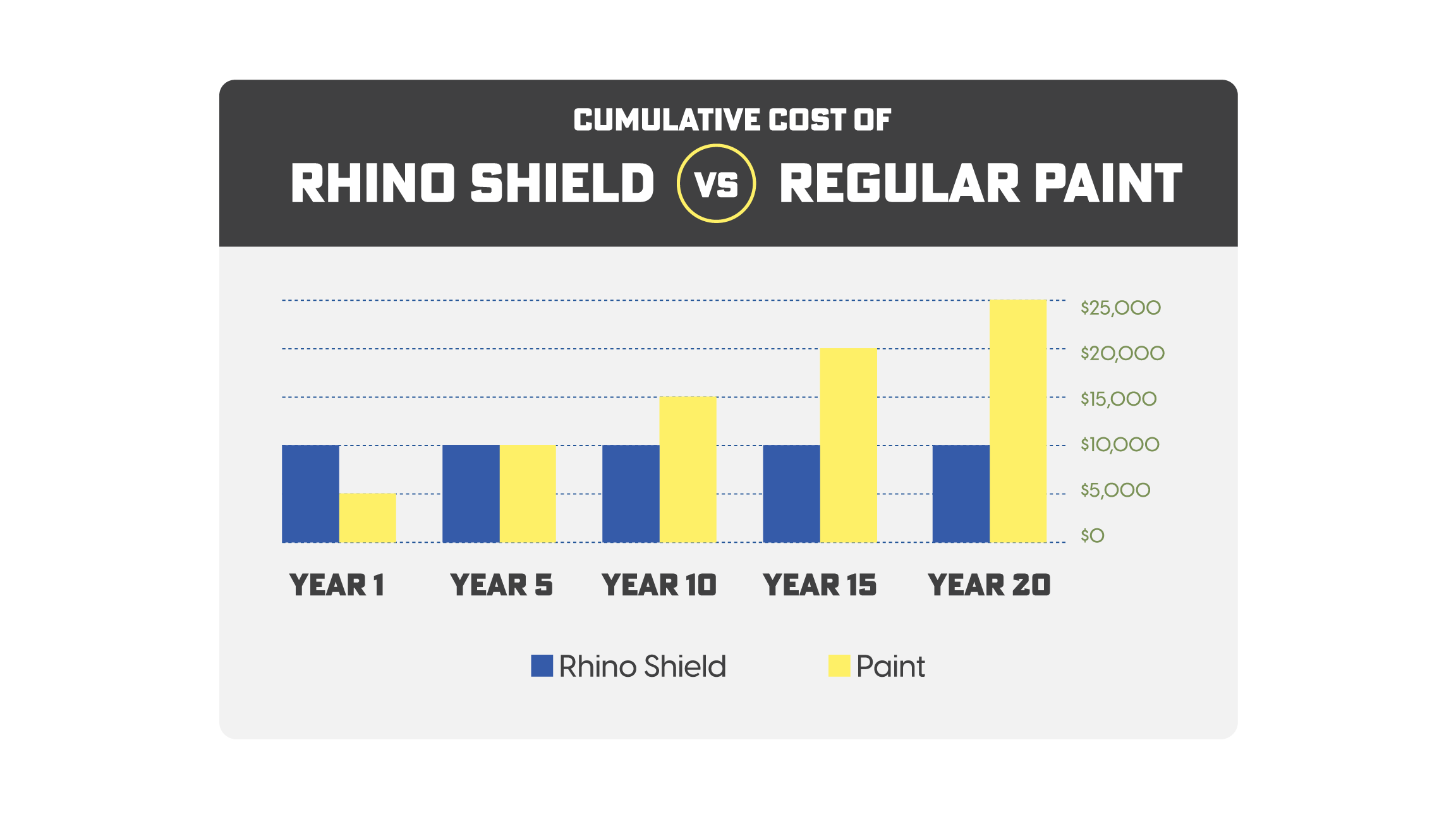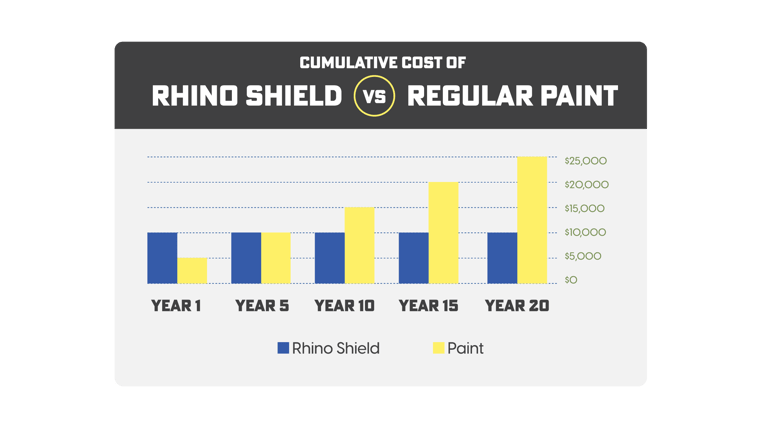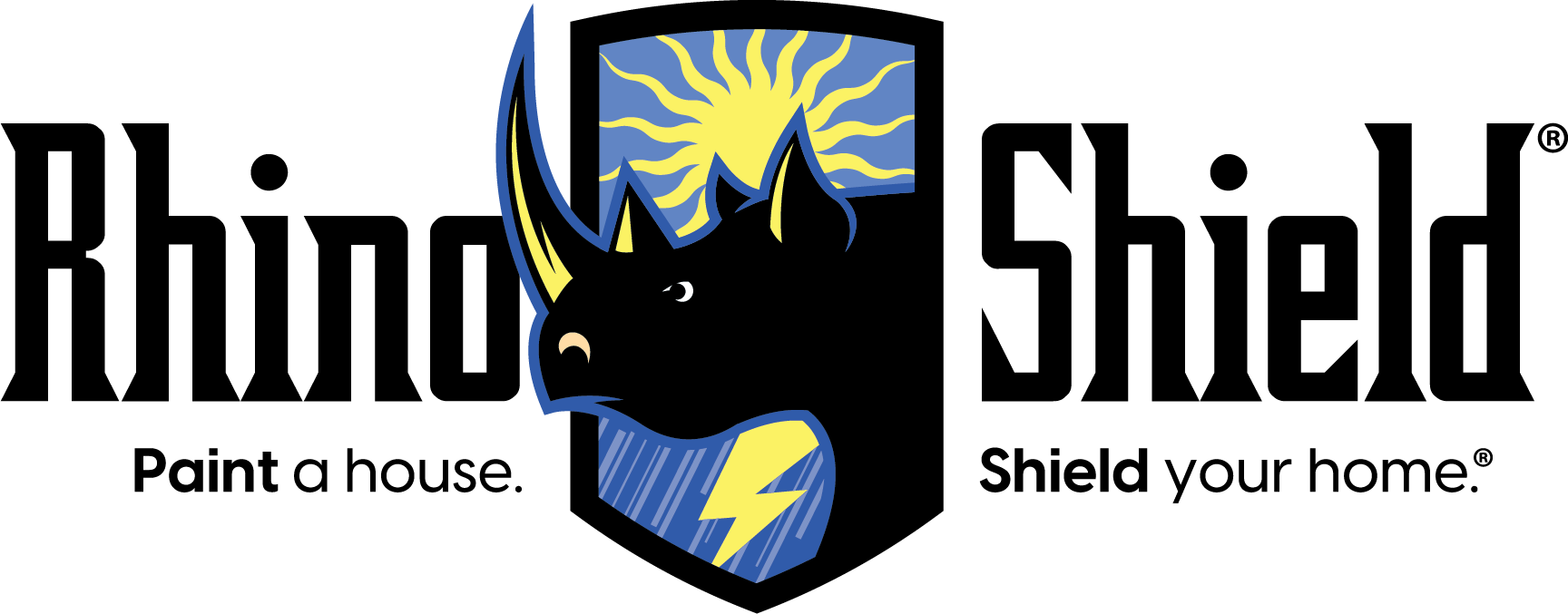What Is the Average Cost to Rhino Shield Your Home? (Pricing, Factors, Financing, and More)
January 3rd, 2024 | 6 min. read
By admin

One of the first questions homeowners often ask us is, "How much does Rhino Shield cost?" Here at Rhino Shield, we want to give you not only an honest answer but also provide full transparency about what exactly you are paying for. Today, we'll delve into:
- The average cost of installing Rhino Shield
- What factors influence our price
- Downpayments/deposits
- Financing
- Potential discounts

The Average Cost to Rhino Shield a House
On average, for a three-bedroom home with wall space at 2000 square feet, a Rhino Shield installation typically ranges from $13,000 to $18,000, that's about $6.50 to $9.00 per square foot. This is compared to a latex paint job that averages between $5,000 and $9,000. However, because you'll have to repaint every five years or so with traditional paint, the total cost over a twenty-five-year period could be anywhere between $25,000 to $45,000 vs. the one Rhino Shield installation of $13k-$18k.
While Rhino Shield's initial cost is higher, it offers remarkable longevity, typically lasting 4 – 5x longer than traditional paint. This makes it a cost-effective choice in the long run, saving you more money over time. And this longevity is ensured by a 25-year, non-prorated warranty.
The cost to paint or coat your home can vary due to several factors, including:
- The current condition of the outside of your home
- The cost of labor
- Special details like using several colors, a lot of trim, or working on a multi-story building
- The size and structure of your home
- Where your home is located
- Any repairs needed before starting the project
- **For older homes, especially historic ones that need a lot of prep work like chemical stripping or complete sanding, the cost could be at least 50% more than the usual rates.
Breaking Down the Cost of Rhino Shield
Preparation Work: Rhino Shield requires a thorough inspection and preparation work, including addressing issues like water damage, cracks, and moisture levels. The extent of these repairs can affect the overall cost.
Patching: We meticulously fill all nail holes and cracks, guaranteeing a smooth and flawless surface. Over time, patches may form due to uneven paint absorption or chips on your siding. To rectify this, we can apply multiple layers of primer to eliminate these imperfections.
Masking: We tape off any areas you don’t want to be painted over.
Trenching: We dig a 4- to 6-inch-deep trench around the foundation of your home to apply our primer and topcoat at the bottom. This protects against algae, water wicking up your walls, fungus, and decay below ground level. Moisture getting under an exterior paint job is the most common damaging problem. Trenching eliminates moisture getting in at the foundation.
Making Repairs: Prior to painting, it's essential to address any rotten or loose siding to ensure a seamless finish. If replacement siding materials are required, we provide this service. Additionally, we replace trim around windows and perform necessary recaulking.
Scraping and Sanding: We take protective measures to shield your landscaping, such as misting plant leaves and laying fabric drop cloths on the lawn to prevent damage from debris during the sanding process. Our team uses appropriate safety equipment, including masks and respirators, while sanding your siding.
Pressure Washing: To guarantee a pristine canvas, we meticulously pressure wash your property, eliminating any dirt or debris from your siding's surface.
Priming: If you intend to change your home's color, a crucial step is adding an appropriate layer of primer. We apply the right amount, tailored to whether you're transitioning to a darker or lighter shade.
Caulking: Following thorough cleaning and priming, we expertly caulk gaps around window frames, door frames, molding, and fascia boards. We also offer an additional service to remove old caulk and residue as needed.
Cleaning: At the end of each workday, our commitment to cleanliness shines through. We ensure a tidy workspace by clearing all equipment and materials, leaving your property as pristine as we found it, albeit with a fresh coat of paint on your exterior surfaces.
Does the Style of My Home Affect the Painting Price?
The short answer: Yes.
Number of stories: More stories often entail hard-to-reach areas, potentially requiring specialized equipment like ladders, roof access, or boom lifts, which factor into the project's cost.
Architectural style: Elaborate structures demand meticulous care and attention to detail. We ensure we have the right paint types to cover all crevices, including trim, gutters, and millwork. Complex projects may require additional workers to handle intricate details.
House age: Homes built before 1978 may contain lead paint, necessitating professional removal before repainting.
What Kind of Siding Do You Have?
Engineered wood: Often pre-primed, requiring fewer paint coats and lower costs compared to hardwood.
Fiber cement: Typically, pre-painted and budget friendly.
Aluminum: Requires periodic repainting but uses less paint than wood.
Brick: Requires less paint and time compared to wood siding.
Wood: May require extensive prep work, including paint removal, sanding, and priming.
Stone: Similar to fiber cement in painting requirements but with some extra primer.
Vinyl: Easily painted with proper preparation.
Exterior concrete: Needs primer and more paint compared to other siding materials.
Stucco: Requires a unique painting process, including surface repair and specialized materials.
Other Factors to Consider:
- Shutters or blinds around windows
- Exterior doors and frames
- Gutters and downspouts
- Roof overhang elements (fascia, soffit, eaves)
- Molding or trim around doors and windows
- Garage exteriors, including doors
- Deck staining in your backyard
Labor costs: Costs may vary based on the cost of living in your area, ensuring fair pricing for labor and materials.
Local material and equipment delivery costs: Component prices may reflect local market values, and specialized equipment, such as lifts and scaffolding, may contribute to overall costs.
Location: Your location can also influence cost. If your home is in a crowded city block with limited access, the logistics of the project are likely to increase the price.
An Industrial-Grade Product: The value of Rhino Shield lies not just in its longevity but also in its impressive features. Rhino Shield is a ceramic coating that offers:
UV resistance- UV resistance
- Water repellence
- Exceptional breathability – Helps prevent mildewcides, fungicides, and algae.
- Soundproofing
- Abrasion resistance
- Grade-A fire retardant
- An eco-friendly choice
Can I Buy & Apply Rhino Shield and Install it Myself (DIY)?
If you want to purchase Rhino Shield, it’s available through our dealers. We train and certify our installers to apply Rhino Shield’s unique coating. Without that professional backing, the likelihood that your project will encounter problems skyrockets.
To view our extensive network of authorized dealers, check out this map.
Do I need a Downpayment to Install Rhino Shield?
When it comes to securing any installation, you should expect to pay a deposit, which will typically range from 10% to 30% of the total cost. The timing of your deposit may vary; it can be lower for projects scheduled further in the future or higher for those with imminent start dates.
Keep in mind that you have room to negotiate prices with your contractor, so don't hesitate to explore your options.
Can I Finance My Rhino Shield Project?
If the initial cost is a concern, financing your Rhino Shield project is an avenue worth exploring. All Rhino Shield dealers offer financing options to make the investment more manageable over time. As a matter of fact, financing your home improvement project is the most popular choice among customers.
Financing Stats 2022:
- 75% of homeowners want to finance at least some part of their next project.
- 4x increase in finance applications since 2020.
Source: Ingage.io
Do I Get a Warranty with Rhino Shield?
Rhino Shield offers a 25-year transferable, non-prorated warranty, highlighting our confidence in the product's long-lasting performance. Should you choose to sell your home, your warranty will transfer to the new owner. Check out our warranty page for more information.
Veteran-owned and Made In the USA
Rhino Shield is 100% manufactured in the United States. We start the process of making our product and finish it here in America.
Along with that, Rhino Shield is veteran-owned. Jason Crawford served 8 years in the U.S. Army as an Infantry Team Leader. During his time serving, he was awarded the Commendation Medal x3, Combat Infantry Badge, and Purple Heart.
Is Rhino Shield Worth the Investment?
Rhino Shield comes in at a 2 – 2.5x higher initial cost than traditional paint. We won’t shy away from that fact. However, these benefits are worth the price:
- Exceptional longevity
- Plethora of protections
- Flexible financing and downpayment options, and
- A 25-year warranty
“Our home is the biggest investment we’ll ever make, and you ought to protect your investment.” - A quote from one of our customers, Art Carinci, who talks about the value of Rhino Shield.
quote from one of our customers, Art Carinci, who talks about the value of Rhino Shield.
It’s important to note that these factors are only applicable to you if:
- You plan to stay in your house for a long period of time.
- You aim to increase the resale value of your home.
If neither of these are relevant to you, you may want to consider other options to paint your home’s exterior. For more information on what you can expect from a Rhino Shield application, check out this additional article.
So, is Rhino Shield worth the cost to you? Well, only you can answer such a question. Just remember that no matter what you choose, consider foremost how long you’re planning on being in your home. Knowing this should make your decision an easy one.
If you have any questions about how to get a Rhino Shield dealer to your home, or if you want a free, no-obligation quote, scroll down.

